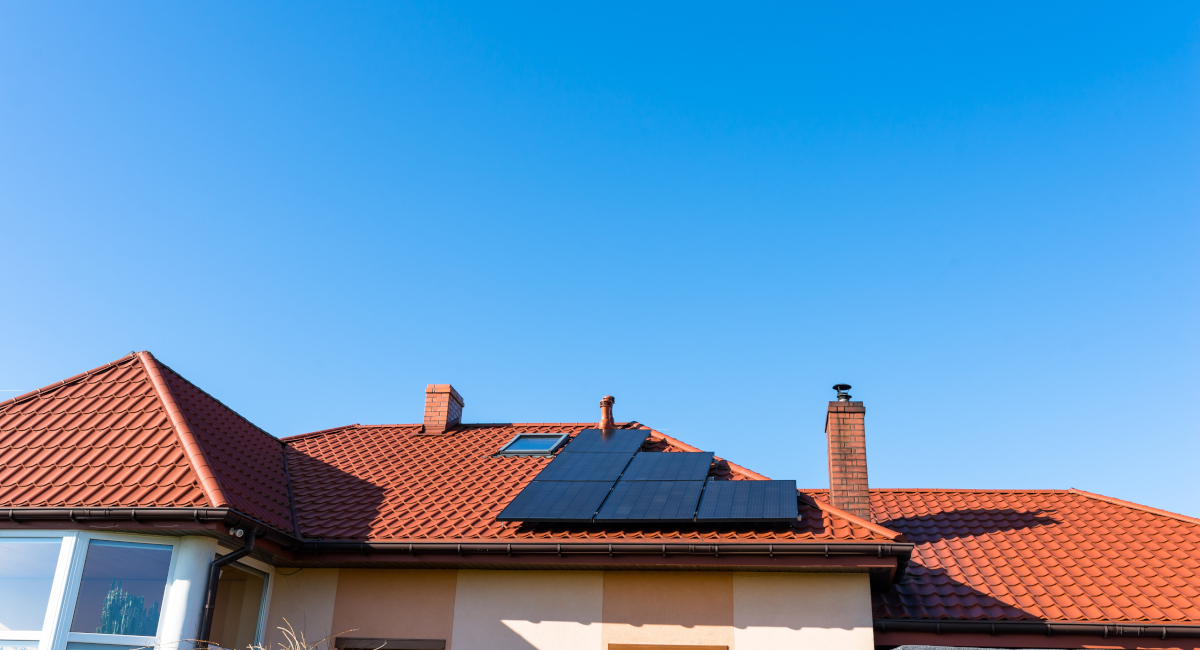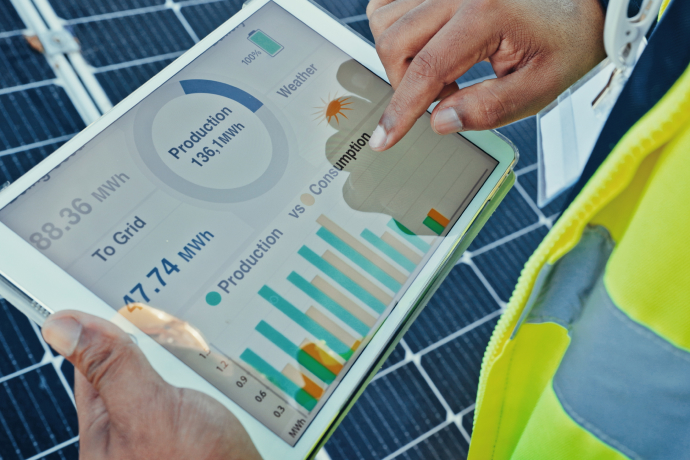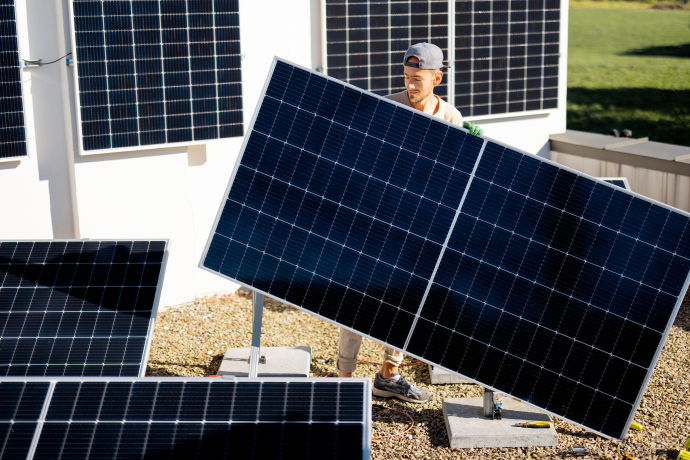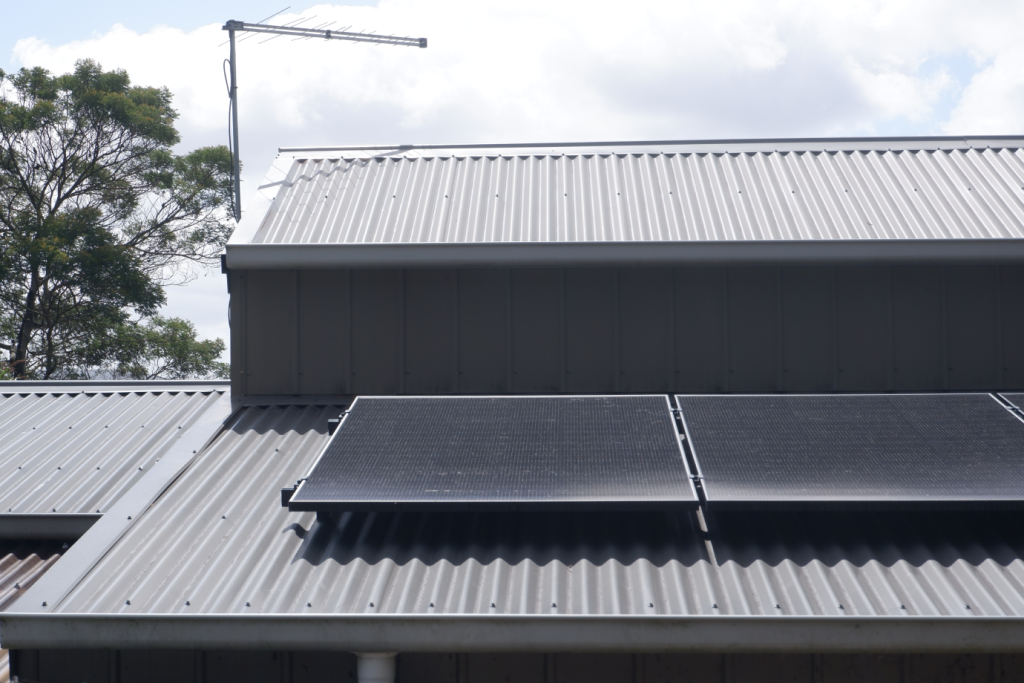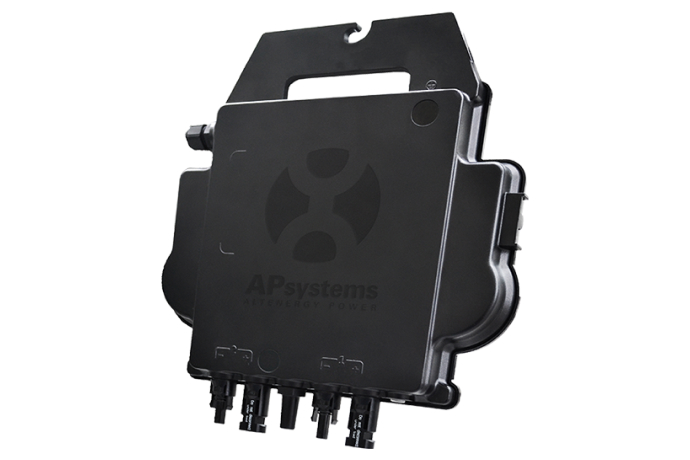Are high efficiency solar panels worth the extra upfront cost? It’s an important question to address, as the impact on your initial outlay and cost recuperation may well be significant. Not surprisingly, the frequent response you’re likely to encounter is, “it depends.”
This less than definitive response can be very frustrating. Unfortunately, it’s probably the most accurate. In order to get a definitive answer, it’s better to ask a different question.
A better question is this. Based on my particular circumstances, both present and potential future, will my electricity demand and financial bottom line benefit significantly from the installation of high efficiency panels?
To answer this question accurately there are a few things that need to be determined. Firstly, and obviously, your unique circumstances need to be defined. Secondly, we need to understand what high efficiency solar panels actually are.
In this article we’re going to address the question of: are high efficiency solar panels worth the higher cost? We’ll identify the differences between standard and high efficiency panels, and we’ll break down the circumstances that will impact your decision-making process.
The aim of this article is to equip readers with the ability to understand the core factors relating to the high efficiency solar panels decision. Armed with the basics, you will be better placed to discuss the topic with professionals, and make informed decisions.
Firstly, let’s get an understanding of what high efficiency solar panels are.
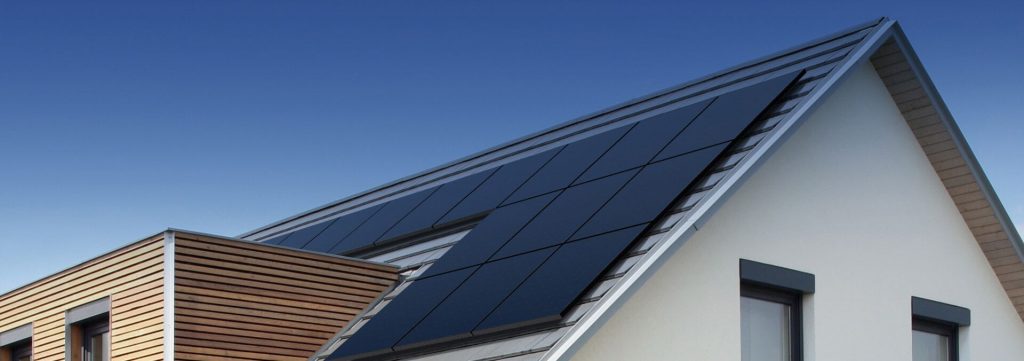
What Are High Efficiency Solar Panels?
The more sun your solar panels convert to electricity – the better.
Solar panels work by collecting photons from sun rays and converting them to electricity. Not all solar panels are created equally, and some do a better job of the conversion process than others.
The efficiency of a solar panel directly relates to the conversion process. For the uninitiated, conversion values will seem low. Even the highly efficient values will seem low. For example, the current highest efficiency is as much as 23% conversion, with lows sitting around 12%.
Those figures are ball park only but offer a reasonable guide to the bottom and top efficiencies you’re likely to encounter.
In practical terms, efficiency can be described like this. Again, these are nominal figures:
- High Efficiency: 19% to 23% 300 to 400 watts
- Standard Efficiency: 15% to 18% 250 to 300 watts
- Low efficiency: Less than 15% Less than 250 watts
It should be noted that efficiency claims should be considered best case scenario. Efficiencies will vary due to your unique circumstances. Consider the upper efficiency reading of each category in the above figures as potential only.
Quality Versus Efficiency
It’s important to note that in this article we are addressing solar panel efficiency, not solar panel quality. Efficiency relates specifically to the panel’s ability to convert the sun to electricity. Solar panel quality will include many more considerations that are not directly addressed in this article.
Panel efficiency should never be conflated with panel quality. You can certainly purchase solar panels that are of outstanding quality, yet not the highest efficiency. The converse of this is also possible: there are panels with a comparatively high efficiency yet of questionable quality.
Generally speaking, however, absolute top shelf solar panels are usually highly efficient and of excellent quality.
At the more popular solar panel price points, this distinction may be less obvious. That said, it’s a good rule of thumb to not assume efficiency equates to quality.
It is also important to note that your solar panels have a life span of around 23 to 30 years. Over this period, efficiency will slowly decrease.
Different brands and panel qualities decline at different rates. The environment in which they are installed will have a significant impact on the rate of decline.
Good solar professionals will factor in your specific environmental conditions when helping you decide between high efficiency and standard solar panels.
Efficiency over time is not only impacted by the design specifications of the solar cells, but also by the overall quality of panel components and construction.
Your Budget And Savings Goals
For most solar customers, limited outlay and maximum return is the crux of the issue. If you had a limitless budget and financial savings were not your primary goal, there’s no conflict. Simply buy the best there is and enjoy the benefits of high efficiency.
For the majority of us, however, electricity cost savings over time is the primary driver behind our solar investment. We are also limited by the amount we can outlay. This is where it can get tricky.
There is a simple rule of thumb most of us employ when purchasing anything. We get the best our budget will allow. This is a good guide for solar as well but there are a few qualifications to adhere to.
- If your budget does not meet the panel efficiency advice you’ve received it is likely more prudent to save for a little longer rather than compromise on a less efficient system.
- Be extremely cautious of big efficiency claims with too-good-to-be-true pricing. Remember, efficiency doesn’t always equate to quality.
- You can certainly compromise on efficiency but NEVER compromise on quality. Cheap solar panels should always be avoided.
Initial outlay budget is a critical factor for most of us. However, it’s your home, the local geography, your electricity demands, and electricity cost saving ambitions that will determine the overall efficacy of high efficiency solar panels.
Let’s take a look at how your house and its location can impact your decision.
Your Home And Its Geography
Solar panels achieve their best efficiency when pointing directly at the sun. In Australia, this means we should face our solar panels to the north.
A north facing panel will achieve its maximum potential when tilted somewhere between 10° and 35°. Most Aussie homes have a roof angle that’s generally between 20° and 35°. This is ideal for solar panels.
The more solar panels you have, the more electricity you can produce. So, in order to have 24 or more panels (a popular and standard size system), you need to have an average sized family home.
It goes without saying that bigger homes with more roof space can put considerably more panels on their roof to maximise sun collection.
Solar panels work best when the sun reaches them and they are unobstructed by shadows and clouds. Solar panels free from such obstructions have the opportunity to work at maximum output.
Solar panels arrive at their efficiency value via testing at 25 degrees. Keep in mind, that’s not the ambient temperature. That’s the temperature of the solar panel itself. If it’s 25 degrees outside on a sunny summer’s day, you can safely assume the solar panel is hotter.
This is important, as for every degree over 25 degrees, your panel will lose a small percentage of efficiency. High efficiency solar cells work better and last longer under tough conditions.
The perfect weather conditions would be average summer temps of around 25 degrees with a high annual percentage of sunlit days. Should cloud and rain only happen in the evenings… it would be all the better.
So, if you have a north facing home, with a large unobstructed roof sloping 20 degrees, where the sun shines all year round, and temperatures are 25 degrees or less on average. Your home is perfect for solar.
In this case, you could get standard efficiency panels and inject the savings into a solar battery. Happy days.
A home with features and geography such as this, doesn’t really require expensive high efficiency panels to achieve outstanding solar benefits.
Electricity Requirements
Most solar customers are hopeful of covering their electricity needs, significantly reducing electricity bills, or wiping them out altogether.
When you have established the amount of electricity you use, as well as factoring in future plans, you may find that your needs would be more than met with standard efficiency panels.
Why embrace a significant jump in outlay when it’s not necessary? This would lead to there being a longer period over which the system takes to pay for itself. That’s generally not a wise financial decision. Sometimes there’s simply no need to foot the outlay of high efficiency panels.
The 4 Biggest Reasons For Choosing High Efficiency Solar Panels
There are lots of Aussie homes that owing to the location, geography or style, will need to find a solution that standard panels won’t be able to.
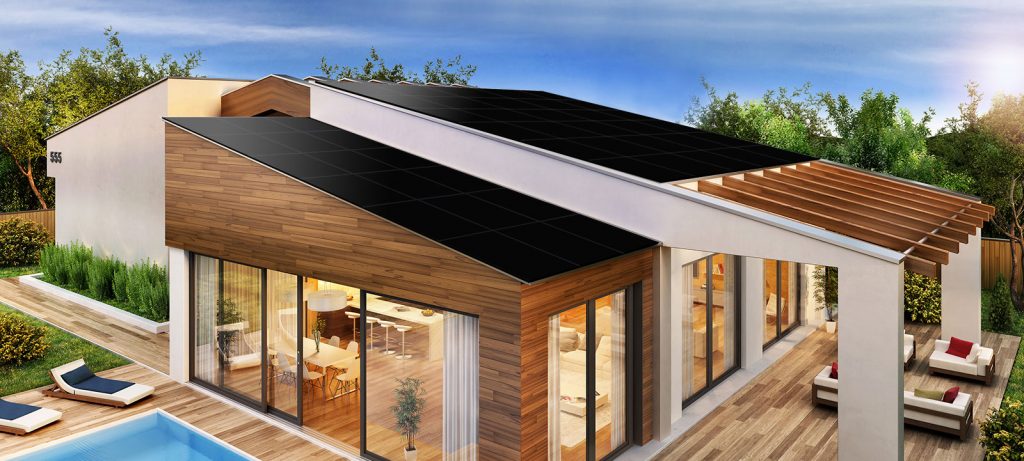
Small Roof Area
Generally speaking, it is those with minimal roof space and higher electricity demands that are likely best served by high efficiency panels.
There are other circumstances, but a lack of roof space is a frequent catalyst for a high efficiency recommendation.
A top of the range solar panel that produces 350 to 400 watts reduces the number of panels required.
Where you might need up to 26 standard panels for a 6kW system with standard panels, you might require only 18 to 20 panels for the same electricity production with high efficiency.
That’s a space saving of over 13 square meters – a whole lot of roof when roof space is scarce.
Higher than Average Electricity Usage
There are those Aussie homes that require a lot of electricity. Factors that will cause this: A large home, a large pool, electric cars, underfloor heating, large climate control systems, many people residing there. Or maybe you are using your home as an office and have computers, laptops, screens and the like, running all day every day.
Such homes use significant amounts of electricity and may be better served by high efficiency panels to avoid filling all possible roof space with standard panels.
Aesthetics
There are solar customers who find a roof full of solar panels visually unappealing. Some will feel that solar panels detract from the visual appeal of their period restoration or modern designer masterpiece. And that’s fair enough for a lot of cases. However, there are a number of panels that are designed with aesthetics in mind.
High-end high efficiency panels are, generally speaking, more visually appealing than standard solar panels. There is also the added benefit of requiring less panels. A smaller quantity of more appealing solar panels can be much less visually intrusive.
Solar Panel Hostile Environments
Marble Bar in Western Australia endures ridiculously hot temperatures. The mercury can tip above 50 degrees, with summer days averaging not much less than this.
This is definitely a hostile panel environment. High quality solar cells are the driver of high efficiency. High quality cells also tend to endure extremes better. They maintain better efficiency over time in the face of tough conditions.
While you may never see the temperature rise to 50 plus, most of Australia will endure extremely hot conditions every summer.
Solar customers dwelling in hot environments may well benefit from high efficiency solar panels. Not necessarily because they produce more electricity, but because they remain more efficient throughout a tough working life.
But Do I NEED High Efficiency Panels?
The biggest reasons for needing high efficiency panels are high electricity usage, a smaller than average roof area & harsh environmental conditions. Aesthetics not being an absolute necessity when looking at solar viability.
Outside of those, there are few other reasons that actually need high efficiency panels to be solar viable.
Modern standard panels of decent quality are quite efficient. This means a good chunk of homes will be able to use these to achieve their electricity cost saving goals.
Even if your home does not face north, and you have a flat roof, quality standard panels can sometimes cover your needs.
Good solar professionals will go through the logistics of what your options are, why and map out the best scenario.
So Why Are There More Expensive High Efficiency Panels Anyway?
That’s a good question. Even if you can utilise standard panels and get a net positive result, people still go with high efficiency panels. You might also ask, why are there brands like Volkswagen, BMW & Lexus when your Toyota Corolla will get you to work and the shops just fine.
Just about any other product, there’s a higher performance range that’s built for those wanting better than ‘good enough’. Generally speaking, the high efficiency, high quality solar panel models look better, last longer and produce more electricity. But you will also pay for the better looking, better lasting and better producing panels.
Solar Panel Long Term Savings
A standard 6.6kW system installed on the average Aussie home will take roughly 4 to 5 years to pay for itself. Considering a life of 22 to 27 years, you will get over 20 years of significantly reduced electricity costs, or few if any costs at all. For those creating excess electricity, you may even make a small sum.
The same size high efficiency system on the same home will most certainly deliver more electricity, but will have a higher initial outlay. It will have a longer average lifespan and produce more, but will take longer to pay for itself.
Many solar retailers promoting high efficiency panels will quote very high savings over the life of your panels. However, it’s crucial that you do the sums or review in detail that math. Look at your current and projected usage versus the extra initial outlay of a high efficiency system. Make sure you take into consideration things that might incur a higher than average electricity usage in the future, like switching to a home office or getting an electric car.
Do the costs and savings analysis of standard over high efficiency. A good solar retailer will help you determine the best path to take for what your goals and objectives are.
Conclusion: Are High Efficiency Panels Worth It?
There are often circumstances where good solar retailers will recommend high efficiency solar panels.
Usually it will be because you have very limited roof space with which standard panels won’t deliver the electricity generation or long-term savings you are hoping for.
Second most common reason is if you have or are planning on including things in your life that would produce higher than average electricity usage.
Harsh environmental conditions may also attract a high efficiency recommendation based on the durability of high efficiency solar cells.
And if house aesthetics are important to you.
However, standard high-quality panels most certainly deliver great efficiency. For a lot of people, that’s good enough. Most homes will still be able to realize profitable electricity savings.
High efficiency panels are worth it if: it allows your home to be solar viable due to available roof size, you could benefit from higher output due to higher than average electricity usage, you’re currently living in an extremely hot region, or, if house aesthetics are important to you.

